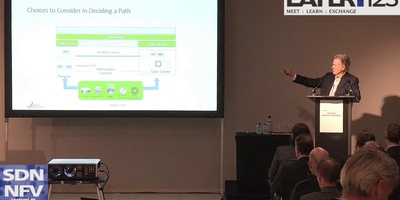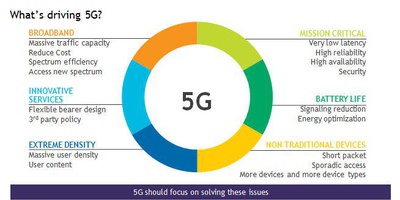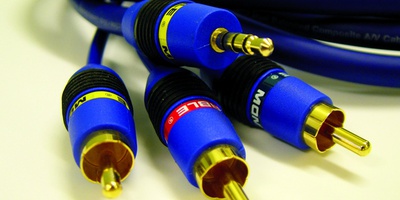Here at the beginning of 2020, the optical networking industry is experiencing a confluence of several technical developments which is ushering in a change in the capacity per wavelength of deployed Dense Wavelength Division Multiplexing (DWDM) equipment. Service providers that are deploying optical networking systems are now turning to new 400 Gb/s (400G) per wavelength solutions to increase transport capacity and optimize connecting ports on Packet-Optical Transport System (POTS), layer-2 switching and routing equipment. Network systems vendors need to align with this transport network transition to stay relevant in the marketplace, and service providers need to familiarize themselves with this opportunity to optimize their networks.
Over the decade since 2010, service providers that operate optical networks have moved from the 10 Gb/s (10G) direct detection DWDM systems deployed during the previous decade (1999 through 2009) to DWDM systems that placed coherently modulated 100 Gb/s (100G) optical channels on the systems’ wavelengths. As the 2010s decade progressed, optical system designers optimized the modulation and detection technology to yield increasing reach (maximum distance between regenerators) and capacity (using the 16-QAM modulation technique to double the capacity of the original QPSK modulation.)
During this same decade, POTS, Layer 2 switching and routing vendors increased the backplane capacity of their switches to 400G and 500G per chassis slot, thereby supporting multiple 100G ports. These 100G ports were originally provided on bulky CFP modules, each of which took up an entire chassis slot. Ultimately, network systems vendors delivered small QSFP-28 modules, which supported four or five 100G ports in a single-slot faceplate. At the same time, service providers and vendors, alike, viewed 400G per wavelength as the next logical step in optical networking. However, designers struggled to space these 400G wavelengths at anything near the 50 GHz spacing of the 100G wavelengths (which reduces the number of wavelengths supported in the fiber and thus, overall fiber capacity). In addition, the initial 400G systems had very modest reaches, generally not reaching beyond a single metro area.
By the end of 2019, the optical networking industry appears to have overcome these obstacles. A new QSFP-DD module, with the same size as the QSFP-28, supports 400G connections. These new 400G modules were not only produced by the network systems vendors, whose pluggable modules tend to work best in the same vendor’s platform, but also a host of component and sub-system manufacturers, whose solutions were open, providing full capabilities on any vendor’s platform. Finally, the R&D teams of both systems vendors and component and subsystem manufacturers have, with the aid of advancements in the semiconductor industry, designed 400G optical channel transmission whose wavelength spacing is only modestly more than (and in a couple of demonstrations, equal to) 50 GHz. In addition, they have also enhanced the modulation techniques to extend 400G reach to approximately the same as 100G reach in the mid-2010s.
The result of this convergence of optical transmission technologies has produced 400G DWDM systems that network operators are beginning to install for their new optical system deployments. Announcements of some examples of these deployments:
- LU-CIX harnesses ADVA FSP 3000 for 400G backbone
- Superloop Deploys the Cisco NCS 1004 for Two Deployments of 4600km at 400G
- Qualitynet deploys ADVA FSP 3000 for flexible 400G connectivity
- Cisco Demonstrates 26.4Tbps on MAREA Transatlantic Subsea Cable
- Colt future-proofs its award-winning Colt IQ Network with extensive upgrade
- AT&T Launches Industry-First 400-Gigabit Network Connection for AT&T
- Long-haul 400 Gbps Ethernet Link Between Chicago and Denver on Internet2’s Research and Education Network
- Juniper Networks Achieves Industry Milestone for Longest 400GbE Deployment
Of course, system and component designers never seem to rest. Acacia introduced 600G modules last year, and Cisco offered to acquire them (Cisco Intends to Acquire Acacia Communications). Several systems vendors began to use the Acacia chipset to compete with Ciena’s well-established 400G platforms, and Ciena responded with the development of an 800G chipset, WaveLogic 5, which it claims nearly ready (in Q2 2020) for sales. WaveLogic 5, which it claims nearly ready (in Q2 2020) for sales. Infinera has replied with its own 800G development, the ICE6 chipset, to be delivered in H2 2020, and Acacia has demonstrated a 1.2 Tb/s (1.2T) chipset (Acacia Communications to Demonstrate Industry-First Coherent 1.2T Single-Chip, Single-Channel Module).
Regardless of the upcoming systems that will operate in the terabit range, the majority of >100G deployments this year will be either 400G (the majority of systems deployed) or 600G systems. It should also be noted that, though the 600G systems offer higher capacity, their reach and wavelength spacing are likely to be inferior to that of the 400G systems. In addition, switch and router vendors have not equipped their platforms with 600G ports, and no 600G short reach interface standard is available for use in connecting these platforms with transport systems.
As deployment of 400G DWDM systems ramp up this year, network systems vendors will need to change their management of 400G systems from “next generation” to currently shipping in volume. Their message needs to shift from “new capability” to “most cost-effective, flexible, scalable, etc.” Simultaneously, the vendors need to employ sourcing cost control and manufacturing optimization to support product line profitability as they enter brutal competition for the heart of the optical networking marketplace.
Service provider optical planners will need to employ 400G optical channels in their models to lower the cost per delivered bit in their networks. That cost is not only critical for wholesale service providers, but cost per delivered bit makes its way into all services provided by infrastructure-based service providers. A service provider’s marketing may not be price-based, but, in the long term, its services must remain profitable in the face of competition.




















